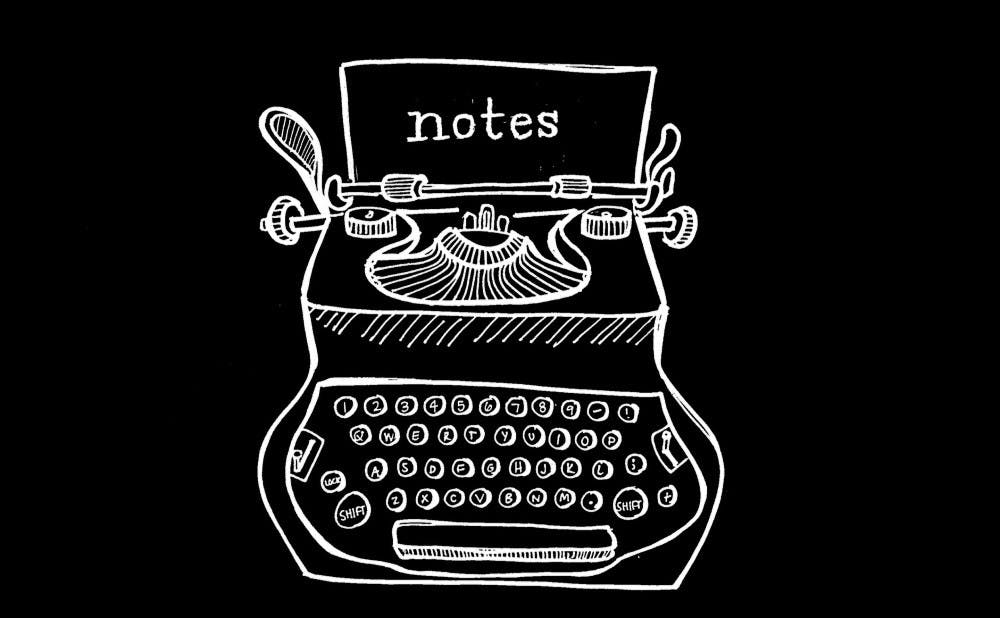When it comes time to assemble Valentine’s Day-themed playlists every year, I’m often struck at just how easy it is to ascribe “love song” status to nearly any piece of pop music: Love, heartbreak and all their variations probably account for a good 50 percent of pop — from “Be My Baby” all the way down to “thank u, next” — and for the rest, it isn’t too difficult to draw the line.
Rarer, though, is the music that wears its love on its sleeve, in all its effusive, soppy glory. This is where, for me, the somewhat nebulous genre known as “twee pop” takes the mantle as the most fitting accompaniment to Valentine’s Day. Like the holiday, it’s as anodyne as it is sometimes alienating, as charming as it is cloying. But despite its detractors, there’s no denying the influence twee has had on what we now know as indie rock, and for that reason alone, it’s worth taking (somewhat) seriously.
As a whole, “twee” is a somewhat difficult label to pin down, because it can be applied to almost anything with a vague childlike innocence and an unswerving belief in love. (By this metric, pretty much anything from the 1960s, from the Beatles’ early singles to the Beach Boys’ “Pet Sounds,” is undeniably “twee.”) But it didn’t emerge as a genre proper — and by virtue of its very name, a genre mostly dismissed by critics — until the 1980s, when DIY culture was taking off among the British underground.
Coming at the start of that decade was the English band Television Personalities’ debut album, “...And Don’t the Kids Just Love It,” a record that bore all the hallmarks of twee: infectious melodies, playful lyrics, jangling guitars and a decidedly amateurish production value — an apparent obsession with the 1960s. Five years later, British music magazine NME would release “C86,” a cassette compilation featuring contemporary indie bands in a time when the term “indie” hadn’t even taken hold in the popular lexicon. By the end of the decade, Britain’s Sarah Records and the United States’ K Records had become havens for this type of DIY music — much of which had definitively “twee” leanings.
What these artists have in common is a balance between self-conscious irony and genuine sentimentality, along with a firm commitment to a do-it-yourself aesthetic. They’re rarely “cool,” but that’s not the point. Any look at the cover designs from this era reveals the care that went into these records — almost like a homemade Valentine. And so, in celebration of a holiday with no shortage of songs to its name, here’s where to start with twee pop, the true patron saint of February 14.
Beat Happening, “Beat Happening”
With an album cover that features a stick-figure cat riding a spaceship, Beat Happening’s 1985 debut may be a case study in everything there is to hate about twee. Taking the disregard for skill level pioneered by punk rock and combining it with a childlike primitivism, the Olympia, Wash., trio alternates between moments of grating noise and endearing (or, perhaps, annoying) sweetness. While the lack of proficiency can be jarring, “Beat Happening” has some gems, and as the founding members of K Records, Beat Happening would spark a musical legacy that helped launch the careers of Built to Spill, Bikini Kill and Modest Mouse.
The Orchids, “Lyceum”
On the other side of the pond from K Records, the Bristol-based Sarah Records led the twee movement in Britain (and in true DIY form, promptly threw a party and shut itself down in 1995, after releasing 100 records). One of the label’s best releases is The Orchids’ “Lyceum,” a brief, eight-track mini-album of gently crafted pop. Th lead track “It’s Only Obvious” is pure twee bliss, reaching a cathartic, if melodramatic, peak with its chorus: “Who needs tomorrow, when all I needed was you?”
Would-Be-Goods, “The Camera Loves Me”
Drawing influences from Caribbean music and loosely based around a fascination with famed English photographer Cecil Beaton, “The Camera Loves Me” may be the most outwardly bizarre selection on this list. But the trademarks of twee are there, with their rough-around-the-edges vocals and sugar-coated melodies, on tracks like “Velasquez and I” and “Marvelous Boy.” It doesn’t hurt that lead singer Jessica Griffin has a sense of humor about it all, too, leaning into unabashed camp on “Pinstriped Rebel” and “Fruit Paradise.”
The Aislers Set, “The Last Match”
With many twee bands filtered ‘60s-style melodies through a shambling punk aesthetic, San Francisco’s The Aislers Set went straight to the source, taking cues from Phil Spector’s classic productions. Although the group released its debut album, “The Last Match,” in 2000, you wouldn’t know it from a first listen: It’s packed full of intricate arrangements that hearken back to both girl pop and the early days of indie, and there’s a distinct melancholic haze permeating these tracks that seems to place them outside of the 21st century. Lead singer Amy Linton’s voice drifts low in the mix among organs and handclaps, while Wyatt Cusick lends a bit of levity on songs like the lovelorn “Chicago New York.”
Will Atkinson is a Trinity junior and Recess culture editor.
Get The Chronicle straight to your inbox
Signup for our weekly newsletter. Cancel at any time.

